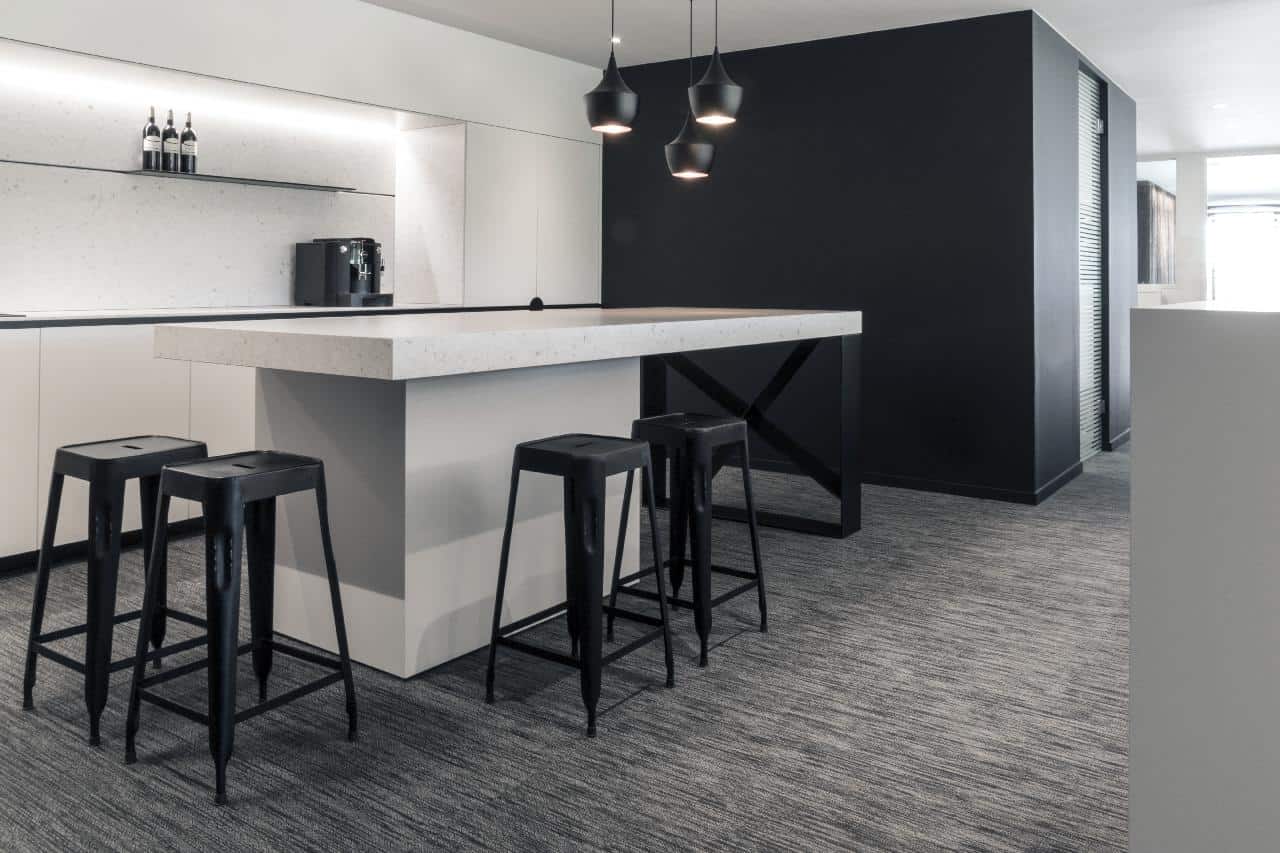Choosing home appliances can be a daunting task, especially when you’re faced with a sea of options and technical jargon. It’s like trying to pick the perfect dance partner at a robot convention – you want someone who can groove to your rhythm without accidentally crushing your toes with their metallic feet.
We’ve compiled a list of 40 common mistakes people make when selecting home appliances. By avoiding these pitfalls, you’ll be well on your way to creating a harmonious household where your toaster doesn’t try to overthrow your microwave in a kitchen coup d’état.Before we dive into the list, let’s take a look at some recent research on home appliance trends.
According to a 2023 study by the Consumer Electronics Association, smart home appliances are on the rise, with 29% of U.S. households now owning at least one smart appliance. However, this trend also brings new challenges, as 42% of consumers reported concerns about privacy and data security when using connected devices.
Here’s a table comparing the importance of different factors when choosing home appliances:
| Factor | Importance (1-10) | Reason |
|---|---|---|
| Energy efficiency | 9 | Saves money and reduces environmental impact |
| Size/fit | 10 | Ensures appliance fits in designated space |
| Price | 8 | Affects budget and long-term value |
| Features | 7 | Determines functionality and convenience |
| Brand reputation | 6 | Indicates reliability and customer support |
| Warranty | 7 | Protects investment and provides peace of mind |
Recent research from the U.S. Energy Information Administration shows that appliances and electronics account for about 31% of a home’s energy consumption. This highlights the importance of choosing energy-efficient appliances. In 2023, ENERGY STAR certified appliances helped Americans save 240 billion kilowatt-hours of electricity, reducing their utility bills by $24 billion.
40 Mistakes to Avoid When Choosing Home Appliances
- Ignoring energy efficiency ratings
Energy-efficient appliances can lead to substantial long-term savings on utility bills. While they may have a higher upfront cost, the reduced energy consumption can result in significant financial benefits over the appliance’s lifetime. Additionally, energy-efficient models often incorporate advanced technologies that can improve performance and durability. - Failing to measure space
Accurate measurements are crucial when purchasing appliances. Not only should you measure the intended location, but also consider the path the appliance will take during delivery. This includes doorways, hallways, and staircases. Failing to do so can result in costly returns or modifications to your home. - Choosing based on looks alone
While aesthetically pleasing appliances can enhance your home’s appearance, prioritizing functionality is essential. An appliance that looks great but doesn’t meet your needs or perform well will ultimately lead to frustration and potential replacement costs. Consider both form and function when making your selection. - Overlooking noise levels
Appliance noise can significantly impact your quality of life, especially in open floor plans or smaller living spaces. Research decibel ratings and read user reviews to gauge the noise levels of potential purchases. This is particularly important for appliances like dishwashers, washing machines, and HVAC systems that run frequently or for extended periods. - Forgetting about maintenance costs
The true cost of an appliance extends beyond the purchase price. Regular maintenance, replacement filters, and potential repairs can add up over time. Research the typical maintenance requirements and costs associated with different models to make a more informed decision. Some appliances may have higher upfront costs but lower long-term maintenance expenses. - Not reading reviews
Customer reviews provide valuable insights into real-world performance, reliability, and user satisfaction. While professional reviews are helpful, user experiences can reveal long-term issues or benefits that may not be apparent in short-term testing. Look for patterns in reviews to identify consistent pros and cons, and pay attention to reviews from users with similar needs and lifestyles. - Buying unnecessary features
Extra features can significantly increase the cost of an appliance without providing proportional value. Assess your needs and habits to determine which features you’ll actually use. Opting for simpler models with essential functions can often lead to cost savings and improved reliability. However, don’t dismiss features that could genuinely improve your quality of life or save time in the long run. - Ignoring water efficiency
For appliances like dishwashers, washing machines, and water heaters, water efficiency is as important as energy efficiency. Water-efficient models can lead to substantial savings on water bills and are more environmentally friendly. Look for WaterSense labels and compare water usage ratings when making your decision. In areas prone to drought or with high water costs, this factor becomes even more crucial. - Overlooking warranty terms
A comprehensive warranty can provide peace of mind and potential savings on repairs or replacements. Compare warranty terms between brands and models, paying attention to coverage length, included components, and any conditions that might void the warranty. Extended warranties may be worth considering for high-end or complex appliances, but always read the fine print to understand exactly what’s covered. - Not considering your lifestyle
Choose appliances that align with your daily routines and habits. For example, a large capacity washing machine might be essential for a big family but wasteful for a single person. Similarly, a high-end chef’s range might be perfect for an avid cook but unnecessary for someone who rarely prepares meals at home. Consider factors like family size, cooking habits, work schedules, and hobbies when selecting appliances. - Forgetting about resale value
High-quality, well-maintained appliances can significantly boost your home’s value. When choosing appliances, consider their potential impact on future resale prospects. Stainless steel finishes and well-known, reliable brands often appeal to potential buyers and can contribute to a higher home valuation. - Neglecting to check for rebates
Many energy-efficient appliances qualify for rebates or tax credits, which can substantially reduce the overall cost. Research available incentives from local utility companies, state programs, and federal tax credits. These savings can sometimes make higher-end, more efficient models more affordable than their less efficient counterparts. - Buying all appliances from one brand
While a matching set can look aesthetically pleasing, it’s not always the best functional choice. Different brands often excel in specific appliance categories. Mix and match to get the best appliances for each function, prioritizing performance and features over a uniform look. - Not factoring in delivery and installation costs
These additional expenses can significantly increase the total price of your purchase. Some retailers offer free delivery and installation, while others charge substantial fees. Always inquire about these costs upfront and factor them into your budget. Also, consider any additional work required, such as electrical upgrades or plumbing modifications. - Overlooking smart features
Smart appliances can offer convenience, energy savings, and enhanced functionality. While they may come with a higher price tag, features like remote control, energy usage monitoring, and integration with home automation systems can provide long-term benefits. Consider how these features align with your lifestyle and tech preferences. - Choosing the wrong capacity
Selecting appliances with inappropriate capacities can lead to inefficiency and frustration. An oversized refrigerator wastes energy, while an undersized washing machine results in more frequent loads. Carefully assess your household’s needs and choose capacities that match your usage patterns for optimal efficiency and convenience. - Ignoring the kitchen work triangle
When replacing kitchen appliances, ensure that your kitchen layout remains functional. The kitchen work triangle (the path between the sink, refrigerator, and stove) should be efficient and unobstructed. Consider how new appliances will affect your kitchen’s workflow and make adjustments as necessary to maintain or improve functionality. - Not considering ventilation needs
Some appliances, particularly cooking appliances, require proper ventilation to function safely and efficiently. Ensure that your kitchen has adequate ventilation for new appliances, especially if you’re upgrading to more powerful models. Proper ventilation not only improves air quality but can also protect your home from excess moisture and cooking odors. - Forgetting about accessibility
Consider the ease of use for all family members, including those with mobility issues or disabilities. Features like front-loading washers, side-by-side refrigerators, or appliances with large, easy-to-read controls can make a significant difference in usability. Think about both current and potential future needs when making your selection. - Neglecting to research brands
Some brands have stellar reputations for specific appliances but may be less reliable in other categories. Do thorough research on brand reliability, customer service, and performance for the particular type of appliance you’re considering. Consumer Reports and other independent testing organizations can provide valuable insights into brand performance across different appliance categories. - Buying floor models without inspection
Floor models can offer significant discounts, but they may have wear and tear or missing parts. Before purchasing a floor model, thoroughly inspect it for any damage, ensure all components are present, and test its functionality if possible. Negotiate for additional discounts if you notice any issues, and make sure the warranty is still valid. - Ignoring user manuals
User manuals contain crucial information about proper use, maintenance, and troubleshooting. Familiarize yourself with these instructions to ensure optimal performance and longevity of your appliances. Many manufacturers now offer digital versions of manuals, making them easily accessible even if you misplace the physical copy. - Not checking for compatibility
Ensure new appliances are compatible with your home’s electrical and plumbing systems. This is particularly important for large appliances like dryers, stoves, and dishwashers. Check voltage requirements, plug types, and any necessary water or gas connections. Incompatibility may require costly modifications to your home’s infrastructure. - Overlooking safety features
Safety should be a top priority, especially in households with children or elderly members. Look for appliances with child locks, auto-shutoff features, and other safety mechanisms. For example, induction cooktops offer a safer cooking experience as they don’t heat up unless in contact with compatible cookware. - Forgetting about seasonal sales
Timing your purchase can lead to significant savings. Major appliance sales often coincide with holidays like Black Friday, Memorial Day, and Labor Day. Additionally, many manufacturers release new models in September and October, making it a good time to find deals on previous year’s models. - Not considering repair availability
Before committing to a brand or model, check if local technicians can service it. Some high-end or niche brands may require specialized service, which can be costly and inconvenient if not readily available in your area. Research the availability and cost of local repair services for the brands you’re considering. - Ignoring color trends
While not crucial for functionality, trendy colors may look dated quickly. If you’re concerned about resale value or plan to keep your appliances for many years, consider opting for classic colors like white, black, or stainless steel. These neutral options tend to have more lasting appeal and can easily fit into various design schemes. - Overlooking storage needs
Consider appliances with good storage options if space is limited in your home. Features like adjustable shelving in refrigerators, fold-down tines in dishwashers, or stackable washer-dryer units can maximize space efficiency. Evaluate your storage needs and choose appliances that offer flexible organization options. - Not factoring in climate
Your local climate can affect the performance of certain appliances. For example, in humid areas, a refrigerator with good moisture control is essential, while in dry climates, a washing machine with a steam feature might be beneficial. Consider how your region’s climate might impact appliance performance and choose models suited to your environmental conditions. - Forgetting about noise pollution
Consider the impact of noisy appliances on your living space, especially in open-plan homes or apartments. Look for appliances with noise-reduction features, particularly for items that run frequently or for long periods, such as dishwashers, washing machines, or HVAC systems. Reading user reviews can provide real-world insights into noise levels during operation. - Neglecting to compare prices
Shopping around is crucial to ensure you’re getting the best deal. Don’t assume that one retailer always has the lowest prices. Compare prices across multiple stores, both online and brick-and-mortar. Remember to factor in any additional costs like delivery, installation, and extended warranties when making comparisons. - Overlooking energy-saving modes
Many modern appliances come with eco-friendly settings that can significantly reduce energy consumption. Look for appliances with energy-saving modes or programmable features that allow you to optimize usage based on your schedule. These features can lead to substantial savings on utility bills over time. - Not considering future needs
Think about how your household needs might change in the coming years. If you’re planning to expand your family, downsize, or age in place, choose appliances that can accommodate these future scenarios. Versatile appliances that can adapt to changing needs can save you from having to replace them prematurely. - Ignoring the importance of proper disposal
Factor in the cost and method of disposing of old appliances. Many retailers offer removal services for old appliances when delivering new ones, sometimes for an additional fee. Alternatively, look into local recycling programs or donation options for appliances that are still in working condition. Proper disposal is not only environmentally responsible but may also be required by law in some areas. - Forgetting to register new appliances
Registration is often required for warranty coverage and can be crucial for receiving important safety notifications or recall information. Many manufacturers now offer online registration, making the process quick and easy. Set a reminder to register your appliances as soon as they’re installed to ensure you’re protected and informed. - Underestimating the importance of filters
Many appliances, such as air conditioners, refrigerators, and dishwashers, require regular filter changes to maintain optimal performance. When choosing an appliance, consider the cost and availability of replacement filters. Some models may have more expensive or harder-to-find filters, which can impact long-term maintenance costs. - Overlooking the benefits of professional installation
While DIY installation might seem cost-effective, professional installation can ensure your appliances function correctly and safely. Improper installation can lead to poor performance, increased energy consumption, and even safety hazards. Factor in the cost of professional installation, especially for complex appliances like built-in refrigerators or gas ranges. - Ignoring the appliance’s lifespan
Different types of appliances have varying expected lifespans. Research the average lifespan of the appliance you’re considering and factor this into your decision. Sometimes, investing in a higher-quality appliance with a longer lifespan can be more cost-effective in the long run, even if it has a higher upfront cost. - Not considering the appliance’s environmental impact
Beyond energy efficiency, consider the overall environmental impact of the appliance. Look for models made with sustainable materials or those from manufacturers with strong environmental policies. Also, consider the recyclability of the appliance at the end of its life cycle. - Overlooking the importance of customer service
Good customer service can make a significant difference if you encounter issues with your appliance. Research the manufacturer’s reputation for customer support, including responsiveness, helpfulness, and warranty fulfillment. A company with excellent customer service can turn a potentially frustrating experience into a satisfactory one.
In conclusion, choosing home appliances doesn’t have to be as complicated as decoding your teenager’s text messages or as stressful as trying to fold a fitted sheet. By avoiding these 40 common mistakes, you’ll be well-equipped to make smart, informed decisions that will keep your home running smoothly for years to come.
The perfect appliance is out there, waiting to make your life easier – and maybe even a little more entertaining. So go forth, brave homeowner, and may your future be filled with energy-efficient, perfectly sized, and delightfully functional appliances that don’t try to outsmart you (unless you want them to).
Happy shopping!
Discover more from Futurist Architecture
Subscribe to get the latest posts sent to your email.



